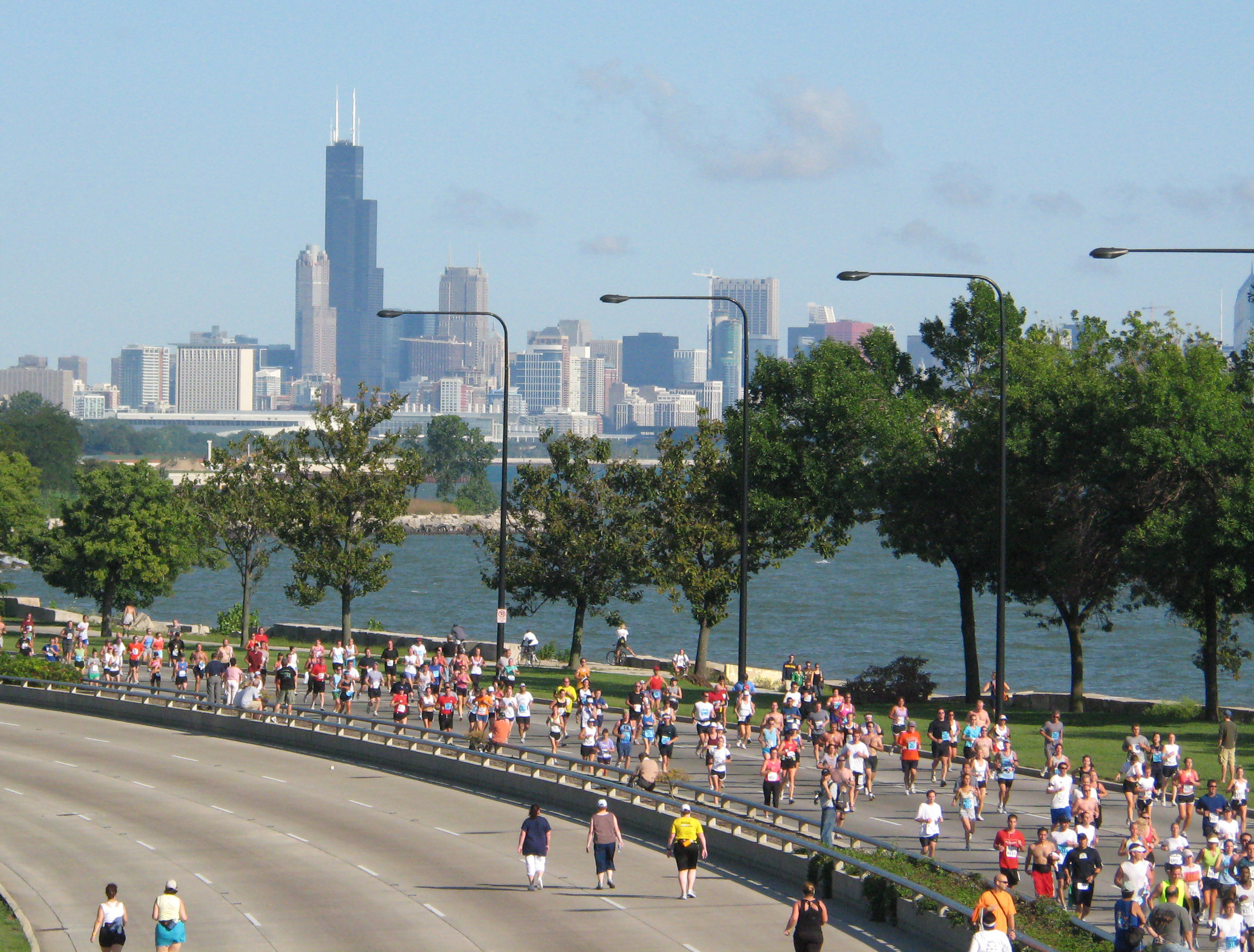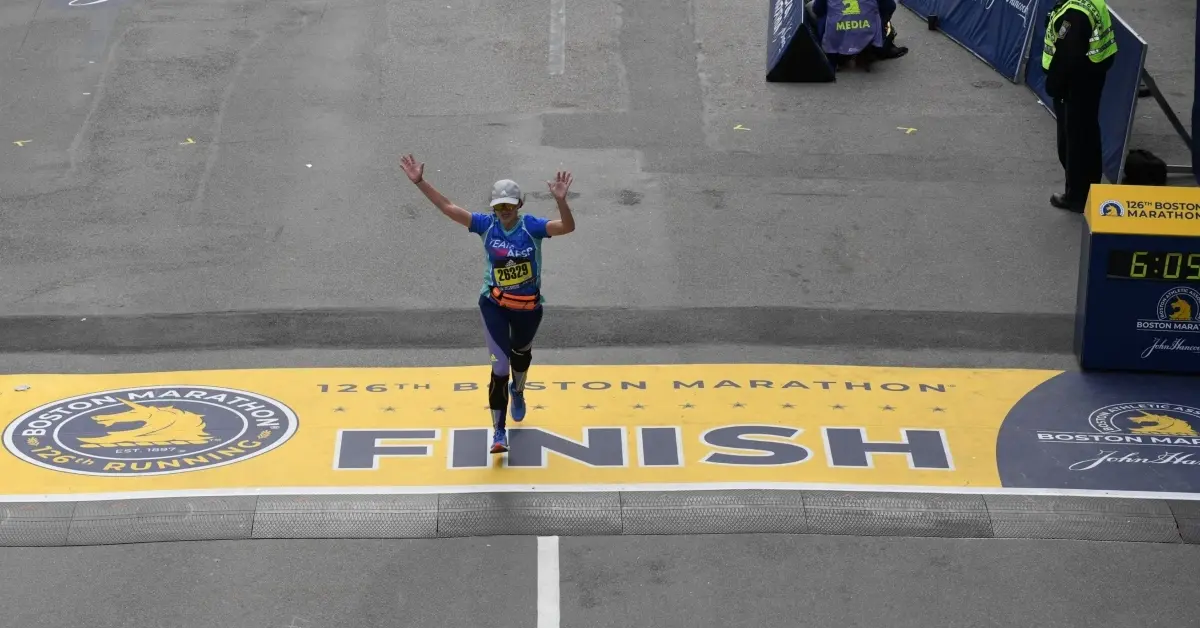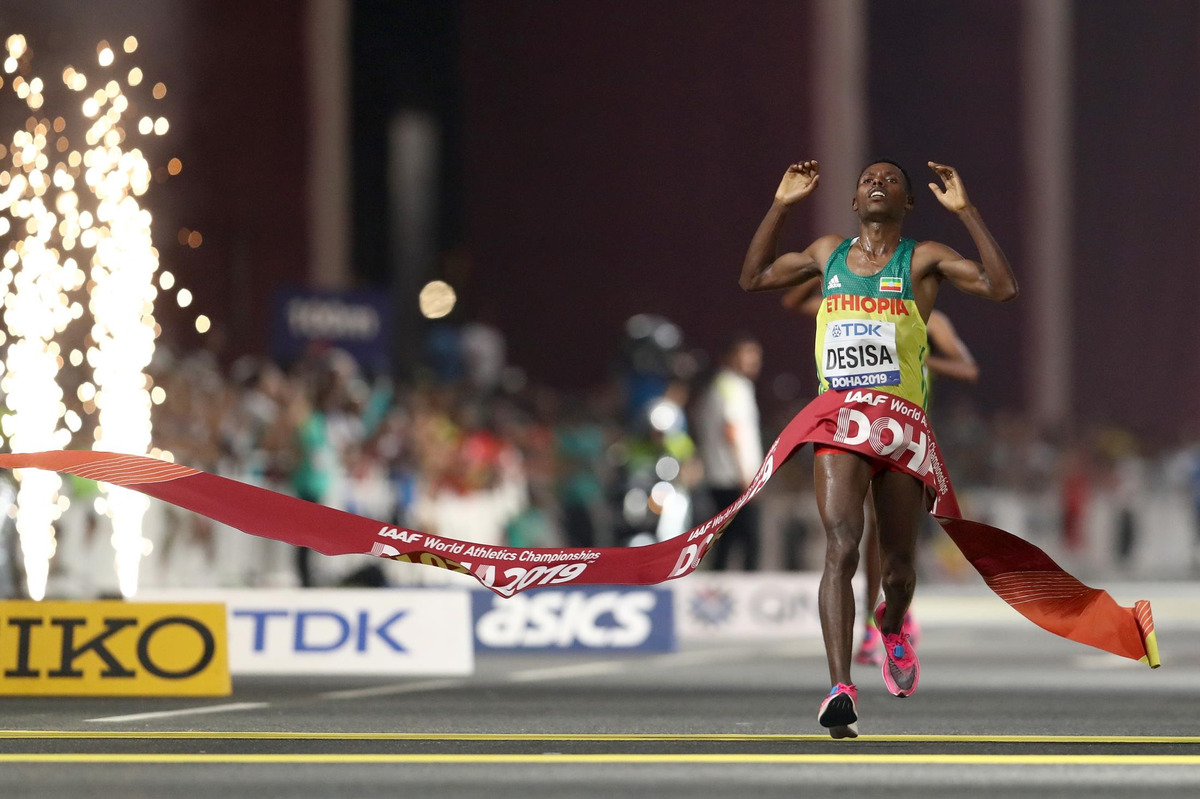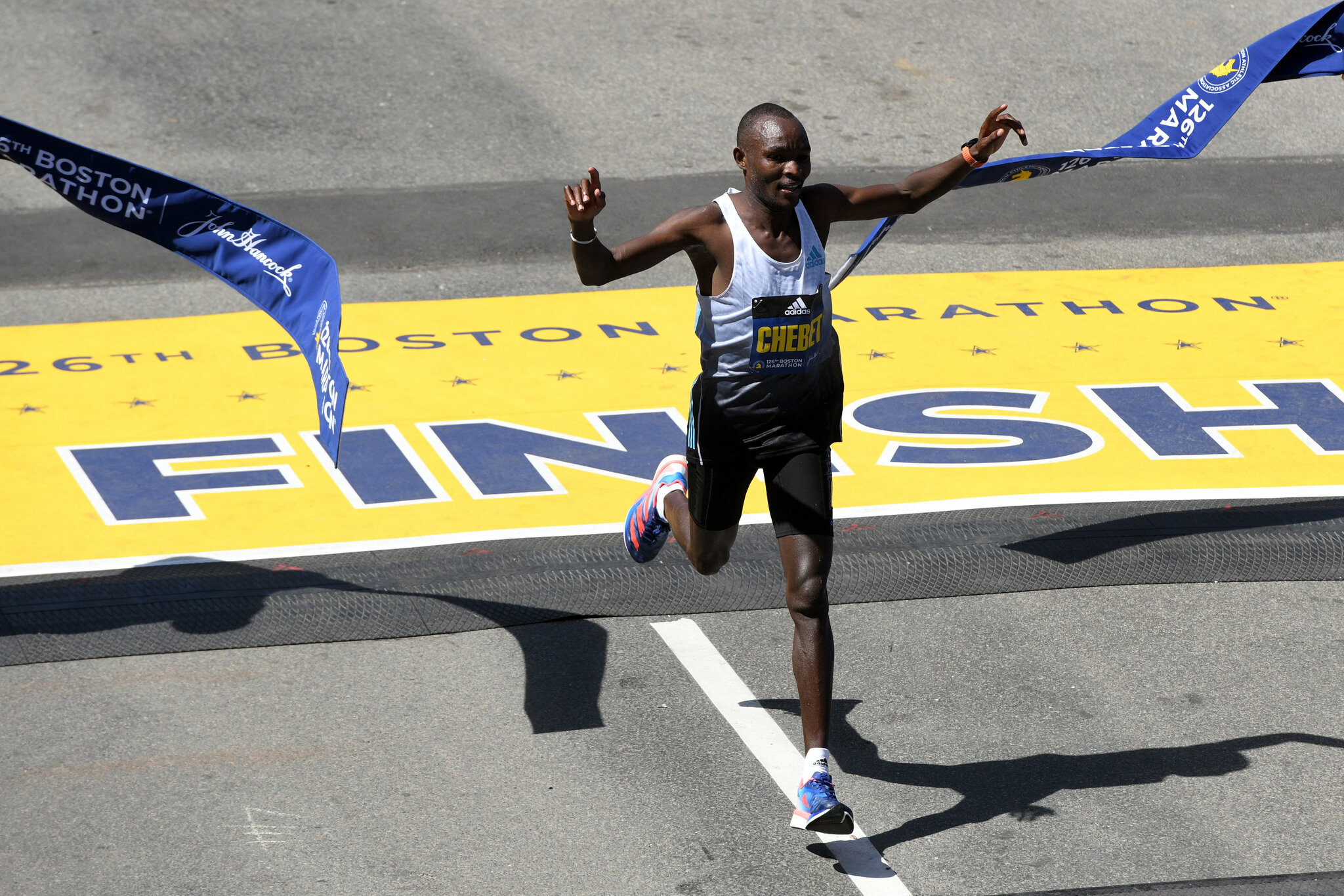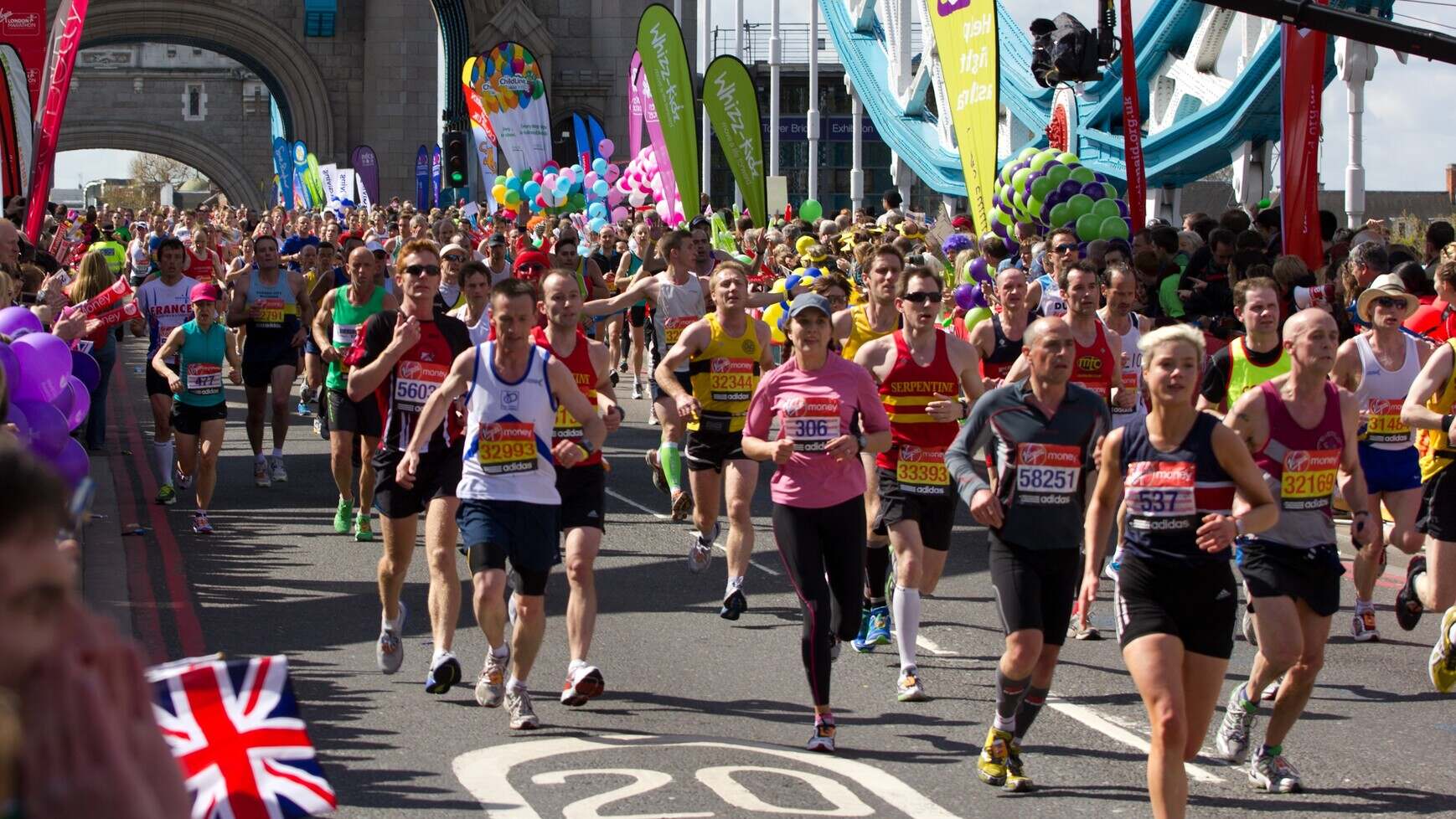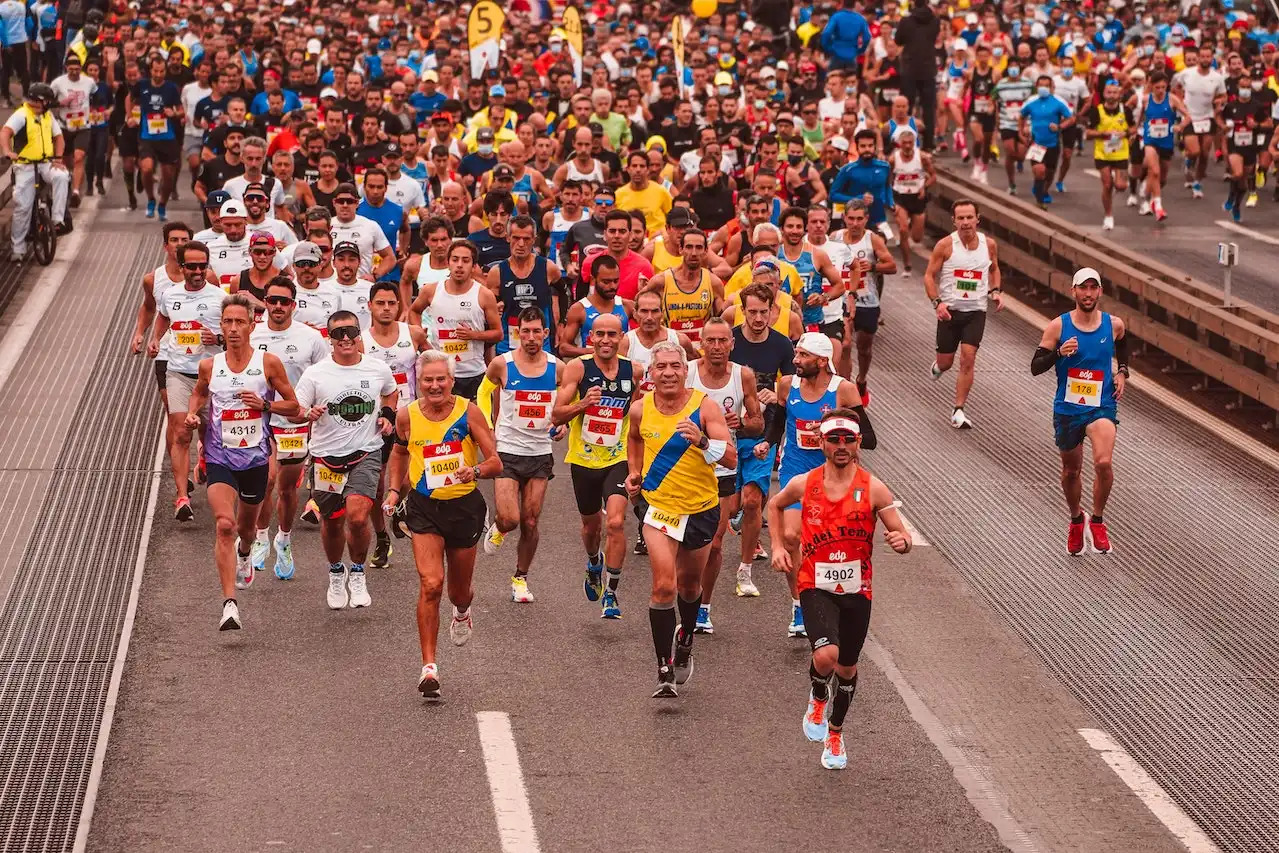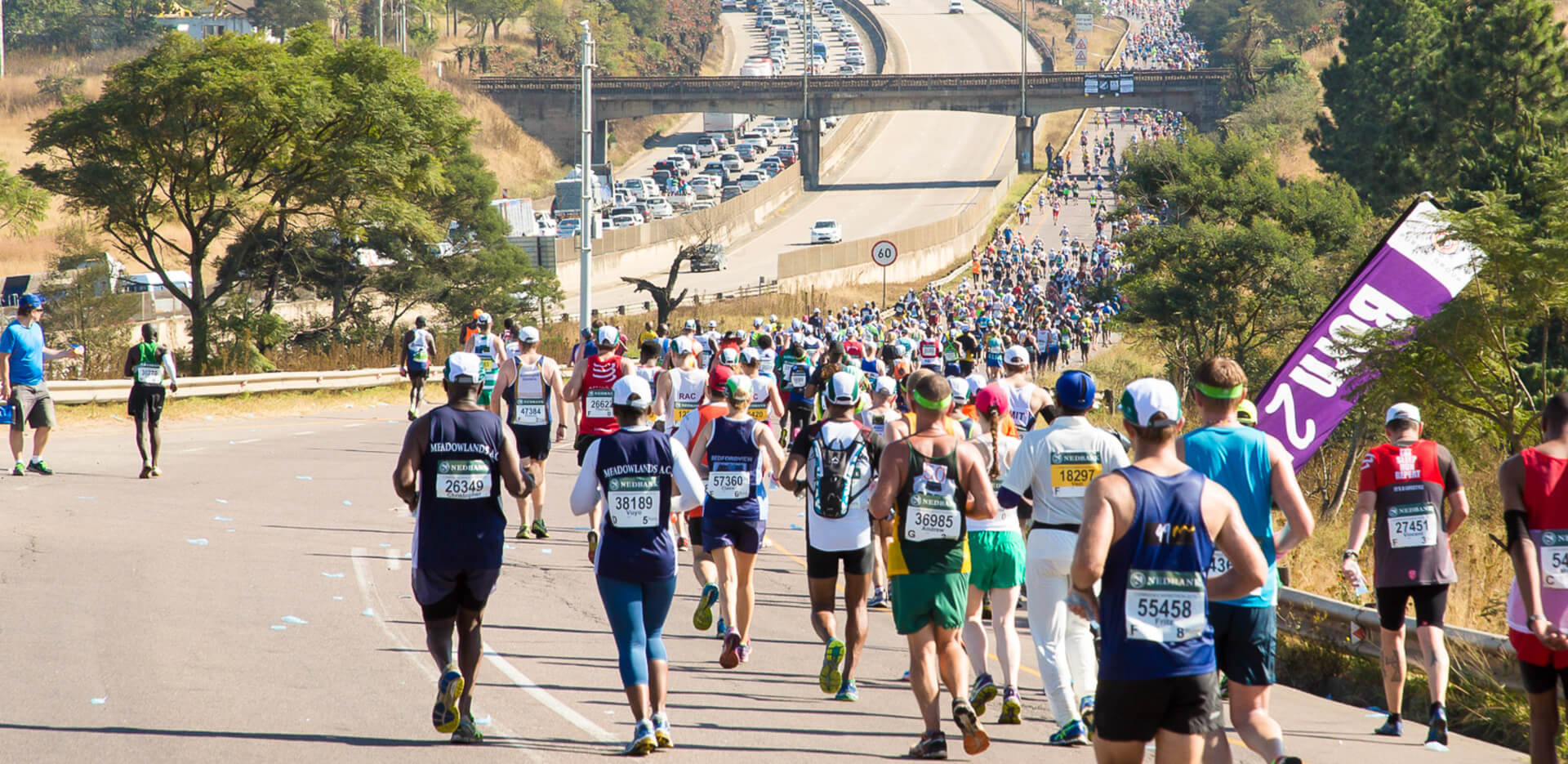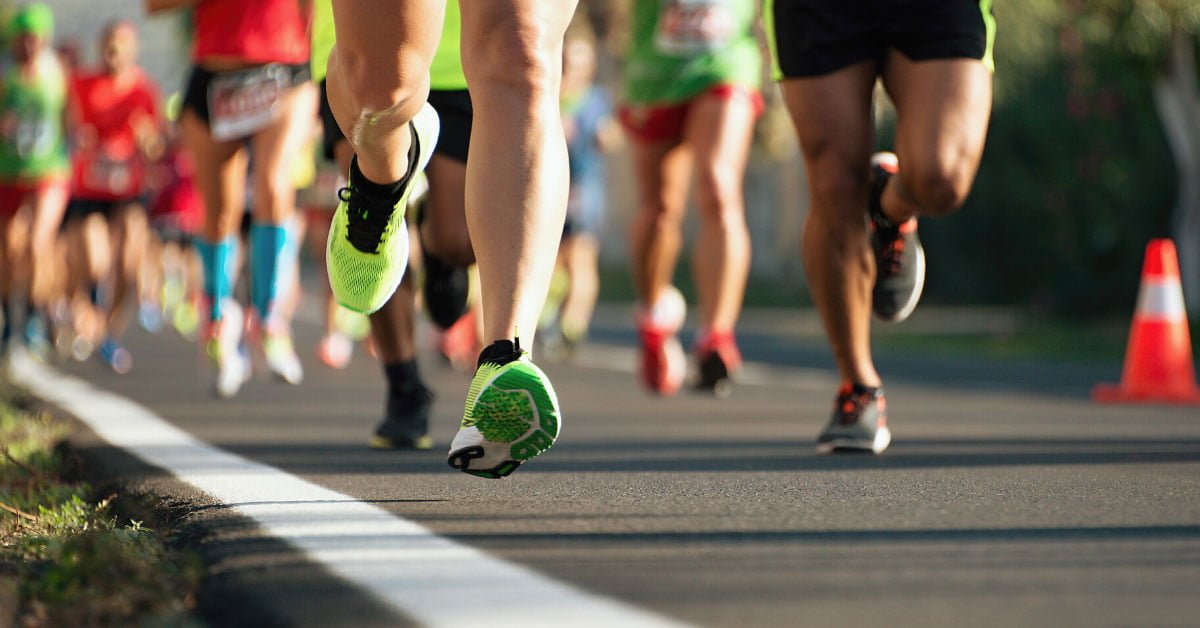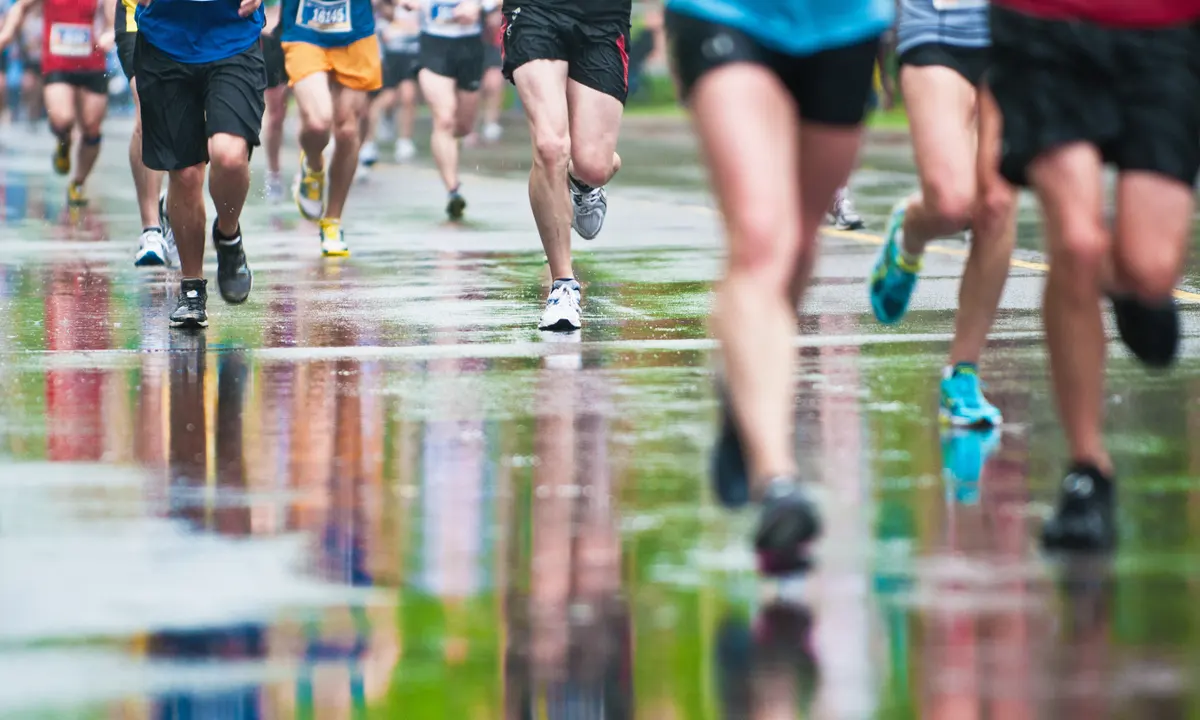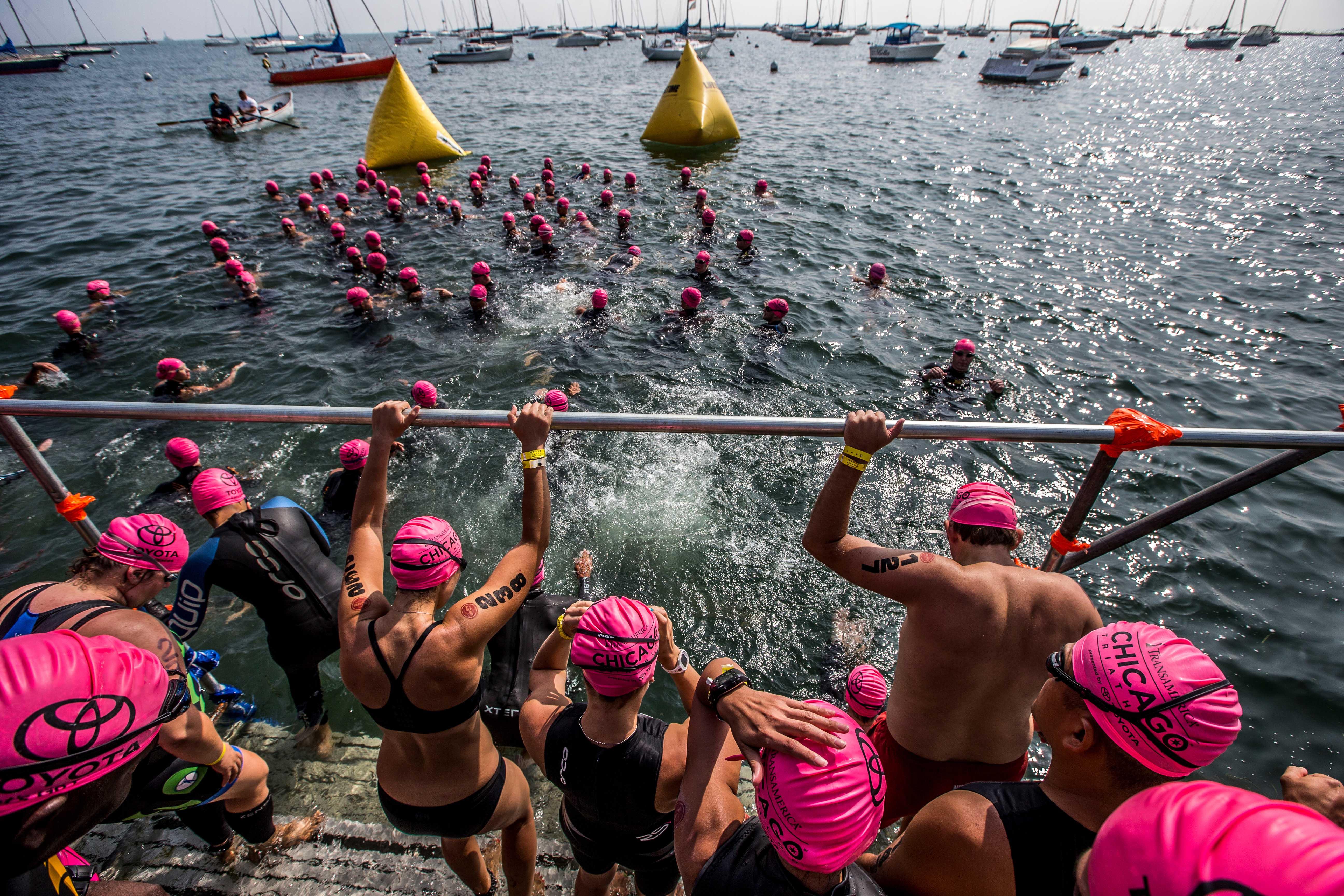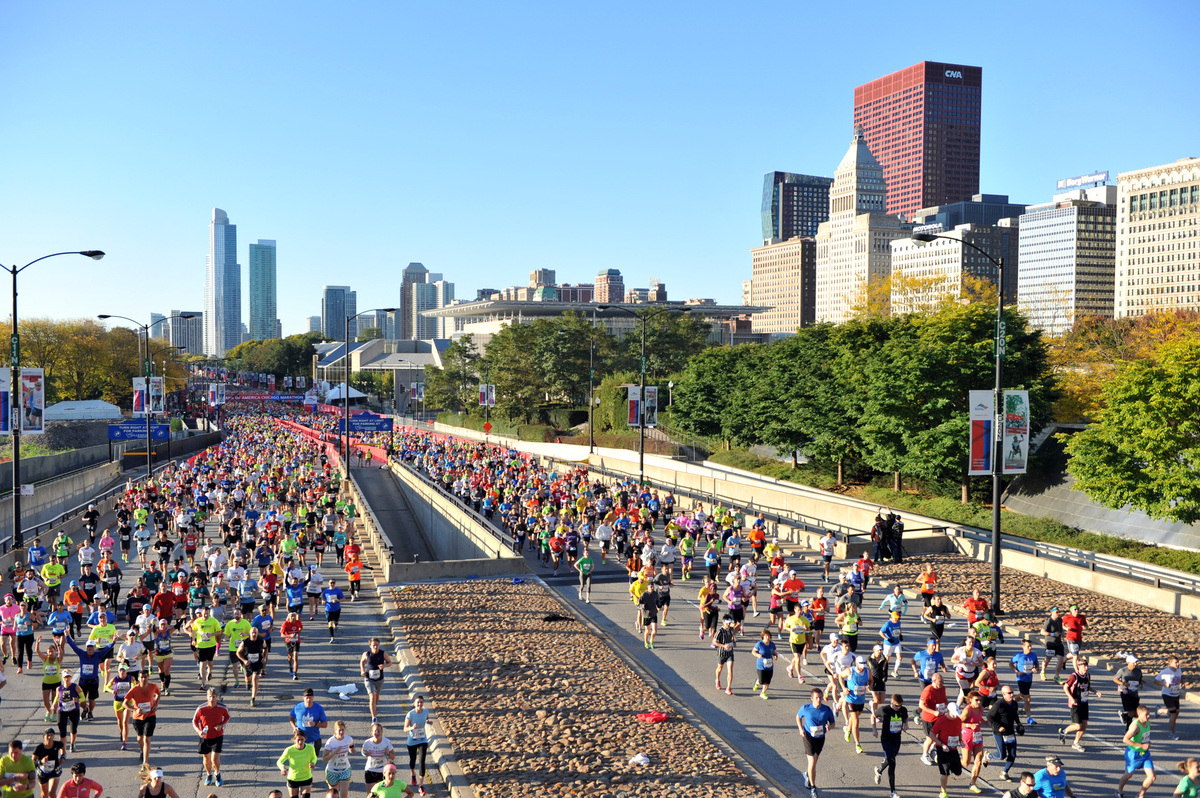

Featured
When Is Chicago Marathon
Modified: August 21, 2023
Learn when the Chicago Marathon takes place and join thousands of runners in this featured event. Mark your calendars and prepare for an unforgettable race!
Introduction
Welcome to the exhilarating world of the Chicago Marathon! Are you ready to lace up your running shoes and join one of the most iconic races in the world? Whether you’re a seasoned marathoner or a first-time participant, the Chicago Marathon offers an unforgettable experience that combines the thrill of running with the vibrant atmosphere of the Windy City.
The Chicago Marathon, established in 1977, has grown to become one of the six major marathons in the world. Every year, thousands of runners from around the globe flock to the city to take part in this monumental event, which is held on the streets of Chicago on the first Sunday of October.
This world-class marathon showcases the city’s stunning skyline, picturesque neighborhoods, and iconic landmarks like Grant Park, Lake Michigan, and the renowned “Magnificent Mile.” The course is known for its flat and fast terrain, making it an ideal race for seasoned runners looking to set a personal best, as well as beginners seeking a scenic and manageable challenge.
Participating in the Chicago Marathon isn’t just about running 26.2 miles; it’s an opportunity to be a part of a monumental event that brings together a diverse and passionate community of runners, volunteers, and spectators. The race day atmosphere is electric, with crowds of supporters lining the streets, cheering, and encouraging participants to push through and achieve their goals.
Not only is the Chicago Marathon a world-class race, but it also has a rich history and stands as a testament to the spirit of resilience and determination. From its humble beginnings with only 4,200 participants, the marathon has grown exponentially, attracting over 45,000 runners from all corners of the globe.
Whether you’re aiming for a personal best, raising funds for a charity, or simply seeking a memorable running experience, the Chicago Marathon offers something for everyone. In this article, we’ll dive deeper into the history of the marathon, explore the course and registration process, provide tips for training, and offer valuable information for spectators.
So, prepare yourself for an unforgettable journey as we delve into the world of the Chicago Marathon, where the thrill of running, the beauty of Chicago, and the spirit of the running community come together in perfect harmony.
History of the Chicago Marathon
The Chicago Marathon has a storied history that dates back to its inaugural race in 1977. What started as a humble event with just a few thousand participants has evolved into one of the world’s most prestigious marathons, attracting elite athletes and running enthusiasts from every corner of the globe.
The idea for the Chicago Marathon was born out of the success of the 1976 United States Bicentennial Marathon, which took place in New York City. A group of visionary individuals in Chicago recognized the potential to create a world-class marathon in their own city and set the wheels in motion.
On September 25, 1977, the first-ever Chicago Marathon kicked off with a modest field of 4,200 runners. The race began and ended at Daley Plaza, with the course taking participants on a scenic tour of some of the city’s iconic sights.
Throughout the years, the popularity of the Chicago Marathon skyrocketed, attracting runners from all walks of life. The race quickly gained a reputation for its flat and fast course, making it an ideal race for setting personal records. In 1982, the Chicago Marathon became a member of the World Marathon Majors, a prestigious series of marathons that includes events in Tokyo, Boston, London, Berlin, and New York City.
As the race continued to grow in stature, so did the number of participants. The Chicago Marathon hit a major milestone in 1994 when it became the first major marathon to surpass the 30,000-participant mark. Over the years, the event’s organizers have worked tirelessly to expand and elevate the race, ensure participant safety, and provide an exceptional experience for all involved.
One of the defining moments in the history of the Chicago Marathon occurred in 2002 when the race witnessed a world record-breaking performance. Moroccan-born Khalid Khannouchi set the men’s world record with a blistering time of 2 hours, 5 minutes, and 42 seconds, solidifying the Chicago Marathon’s reputation as a race that attracts top-tier talent.
Another significant milestone for the Chicago Marathon came in 2008 when the event celebrated its 30th anniversary. To commemorate this special occasion, the marathon introduced a commemorative finisher’s medal, which became a cherished memento for all those who crossed the finish line.
Today, the Chicago Marathon continues to uphold its legacy as one of the world’s most renowned marathons. The event has a profound impact on the city, contributing to its economy, fostering a sense of community, and inspiring countless individuals to take up running and lead healthier lifestyles.
As the Chicago Marathon enters its next chapter, the future looks bright. With its rich history, iconic course, and enthusiastic running community, this event is sure to captivate the hearts and minds of runners for years to come.
Course and Route
The Chicago Marathon boasts a world-renowned course that showcases the best of the city’s landmarks and neighborhoods. Known for its flat and fast terrain, the course is designed to provide participants with an optimal running experience while offering breathtaking views of Chicago’s iconic sights.
The race starts and finishes in Grant Park, a sprawling green oasis nestled against the stunning backdrop of Lake Michigan. Runners embark on a 26.2-mile journey that takes them through 29 vibrant neighborhoods, each with its own unique charm and character.
The course begins by winding through the streets of downtown Chicago, passing by architectural gems such as the Chicago Board of Trade and the Willis Tower. Runners then make their way north, running along the shoreline of Lake Michigan, providing them with dazzling views of the water and the city’s skyline.
As the course proceeds, participants venture into neighborhoods like Lincoln Park, Lakeview, and Old Town, where they are greeted by enthusiastic crowds of spectators lining the streets, cheering them on every step of the way. The energy and support from the community create an electric atmosphere that keeps runners motivated and determined.
Notable landmarks along the route include the iconic Wrigley Field, home of the Chicago Cubs, where runners are treated to a unique glimpse into America’s favorite pastime. The course also passes through Chinatown, offering a taste of the city’s cultural diversity and vibrant culinary scene.
With its flat and fast nature, the Chicago Marathon is renowned for being an ideal course for setting personal records. The absence of major hills and the smooth road surface make it a favorite among seasoned marathoners and first-time participants alike.
In addition to the scenic and spectator-friendly route, the race organizers go to great lengths to ensure participant safety and comfort. Aid stations are strategically placed along the course, providing water, electrolyte drinks, and medical support to runners. The Chicago Marathon also prides itself on its commitment to sustainability, with recycling and waste management initiatives in place throughout the event.
As participants approach the final stretch, they enter Grant Park once again, greeted by the roaring cheers of the crowd. The picturesque skyline serves as a backdrop as runners push through the final miles, fueled by the support and camaraderie of their fellow competitors and spectators.
Crossing the finish line of the Chicago Marathon is a moment of triumph and celebration. Finishers are rewarded with a well-deserved medal and a sense of accomplishment that will stay with them for a lifetime.
Overall, the course and route of the Chicago Marathon provide an unforgettable journey through the heart of the city, immersing participants in the vibrant energy of Chicago while offering a fast and scenic route that caters to runners of all abilities.
Registration and Qualification
Securing a spot in the Chicago Marathon is a highly sought-after opportunity for runners worldwide. The registration process is organized to ensure fairness and inclusivity, allowing participants of varying abilities to experience this iconic race.
Registration for the Chicago Marathon typically opens several months in advance, and spots are filled on a first-come, first-served basis. It’s important to mark your calendar and be ready to sign up as soon as registration opens, as slots can fill up quickly due to the race’s immense popularity.
The entry fee for the Chicago Marathon is determined annually and varies depending on the registration category. Charity entries and international entries may have different requirements and fees, so it’s essential to familiarize yourself with the guidelines before signing up.
In addition to the general registration process, the Chicago Marathon also offers a certain number of guaranteed entries through their charity and tour partner programs. These options provide an opportunity for runners to secure a spot in the race while raising funds for a charitable cause or booking a travel package.
For those looking to qualify for the Chicago Marathon, there are several ways to do so. The race follows a tiered qualification system, which varies based on age and gender.
Runners who have completed a previous Chicago Marathon within a specified time frame are granted guaranteed entry for the following year. This is known as the “legacy” program and is a coveted option for runners who want to continue their Chicago Marathon journey.
For those aiming to qualify based on time, the Chicago Marathon requires participants to meet designated time standards. These standards vary depending on age and gender and are based on official marathon times achieved in specific races. Applicants must provide proof of their qualifying time during the registration process.
If you don’t meet the qualification standards or miss out on the general registration, don’t despair! The Chicago Marathon also offers a limited number of entries through lottery and charity programs. Participating in a charity program allows you to secure a spot while giving back to a worthy cause.
The race organizers prioritize inclusivity and encourage runners of all abilities to participate in the Chicago Marathon. The event celebrates the spirit of personal growth and the joy of running, making it accessible to both experienced marathoners and those embarking on their first 26.2-mile journey.
Before registering, it is essential to review the eligibility requirements and familiarize yourself with the registration process, qualifications, and any associated fees or deadlines. Being prepared and well-informed will increase your chances of securing your place in this world-renowned marathon.
Regardless of how you secure your entry to the Chicago Marathon, the experience of running through the vibrant streets of the Windy City and crossing that finish line is an achievement to celebrate and cherish for a lifetime.
Chicago Marathon Experience
The Chicago Marathon offers a truly exhilarating and unforgettable experience for all participants. This iconic race not only tests your physical endurance but also immerses you in the vibrant energy and spirit of the running community.
On race day, thousands of runners gather in Grant Park, buzzing with anticipation and nervous excitement. The atmosphere is electric as participants from all walks of life come together, united by their shared love for running and their goal of conquering 26.2 miles.
As the starting horn sounds, you join the sea of runners, embarking on a journey that will push your limits and unleash your inner strength. The cheering crowds lining the course serve as a constant source of motivation, spurring you on with their infectious enthusiasm and unwavering support.
Running through the diverse neighborhoods of Chicago, you experience the city like never before. You pass vibrant communities, iconic landmarks, and cheering sections filled with spectators offering high-fives, encouraging shouts, and motivational signs that keep your spirits high.
The aid stations are a welcome sight along the course, offering hydration, energy gels, and the support of dedicated volunteers. The race organizers prioritize the safety and well-being of participants, ensuring there are medical personnel stationed throughout the course to provide any necessary assistance.
The Chicago Marathon’s commitment to sustainability is also evident along the course, with recycling and waste management initiatives in place to minimize the environmental impact of the event.
As you approach the final miles, the energy intensifies. The anticipation of reaching the finish line pushes you forward, fueling your determination. The iconic Chicago skyline serves as a majestic backdrop, adding to the grandeur of the moment.
As you cross the finish line, a wave of emotions washes over you—pride, elation, and a sense of accomplishment to have completed one of the world’s most prestigious marathons. Volunteers cheer you on as you receive your well-deserved medal, a tangible symbol of your dedication and perseverance.
Post-race, you can soak in the celebration in Grant Park, where runners and their families reunite, sharing stories and relishing in the achievement. Food vendors, live music, and various activities foster a festive atmosphere, creating an experience that goes beyond the race itself.
The Chicago Marathon isn’t just a race; it’s a transformational journey. It challenges you physically, tests your mental resilience, and connects you with a community of like-minded individuals who understand the joys and struggles of long-distance running.
Whether it’s your first marathon or your twentieth, the Chicago Marathon leaves an indelible mark on your running journey. It’s an experience that transcends the physical act of running, inspiring you to push your limits, celebrate your achievements, and embrace the power of the human spirit.
Training for the Chicago Marathon
Preparing for the Chicago Marathon requires a well-structured training plan that balances mileage, speed work, and proper recovery. Whether you’re a seasoned runner or new to the marathon distance, a solid training regimen will help you build endurance, improve performance, and minimize the risk of injury.
A typical marathon training plan spans around 16 to 20 weeks, allowing ample time for gradual progression and adaptation. It’s important to start with a solid base of running fitness before diving into marathon-specific training. This typically involves several weeks of easy runs, gradually increasing weekly mileage.
As you progress through your training, incorporating structured workouts is crucial. Tempo runs, where you run at a comfortably hard pace, will help improve your lactate threshold and enhance your ability to sustain a faster pace for longer periods. Interval training, such as track workouts or hill repeats, helps build speed and strength, making you a more efficient runner.
Long runs are the backbone of marathon training. These runs gradually increase in distance, simulating the physical and mental demands of the marathon. It’s important to follow a progressive approach, increasing your long run distance by no more than 10% each week, to avoid overtraining and reduce the risk of injury.
While training for a marathon, rest and recovery are just as important as the actual workouts. Make sure to schedule regular rest days and easy recovery runs to allow your body to adapt and repair. Incorporate cross-training activities such as swimming, cycling, or yoga to maintain overall fitness and prevent burnout.
Proper nutrition and hydration are essential for sustaining energy levels and aiding in recovery during training. A well-balanced diet consisting of carbohydrates, protein, and healthy fats will fuel your runs and support muscle repair. Hydration is also crucial, both during your training runs and throughout the day.
Listening to your body is key. If you’re experiencing pain or prolonged fatigue, don’t push through it. Pay attention to any signs of overtraining or injury and seek appropriate rest and medical attention if needed. It’s better to take a few days off than to risk more serious setbacks.
The Chicago Marathon offers a few key advantages for your training. Its flat course allows you to focus on speedwork and specific marathon pace training. Familiarizing yourself with the course elevation profile can also help you tailor your training runs to mimic the race conditions.
It’s recommended to participate in at least one or two shorter races or tune-up races as part of your training. These races will provide an opportunity to practice your race-day strategy, fine-tune pacing, and gain confidence before the main event.
Remember, training for a marathon is a journey, and progress may not always be linear. There will be good days and challenging days, but the key is to stay consistent, stay motivated, and trust in the process. The rewards of completing the Chicago Marathon are worth the dedication and effort put into your training.
Spectator Information
The Chicago Marathon isn’t just an event for the runners; it’s an incredible experience for spectators as well. Supporting and cheering on the participants adds to the electric atmosphere, creating a sense of unity and encouragement along the course.
If you’re planning to be a spectator at the Chicago Marathon, here are some important tips and information to help you make the most of your experience:
1. Plan your viewing spots: The Chicago Marathon covers an extensive route through different neighborhoods. Familiarize yourself with the course map, and choose a few strategic locations where you can see and cheer on the runners. Popular spots include Grant Park, along the Magnificent Mile, and the stretch near the Willis Tower.
2. Get there early: Arrive at your chosen viewing spots well in advance to secure a good spot and soak in the pre-race atmosphere. Crowds can gather quickly, so ensure you have enough time to find a prime location to cheer on the runners.
3. Bring your enthusiasm: Spectators play a crucial role in keeping the runners motivated throughout the race. Bring signs, noisemakers, and vocal encouragement to cheer on the participants. Your energy and support will make a huge difference!
4. Dress appropriately: Remember that the Chicago Marathon takes place in early October, so the weather can vary. Dress comfortably and consider bringing layers to adjust to changing temperatures. Comfortable shoes and sunscreen are also essential for a day spent spectating.
5. Stay hydrated and fueled: Spectating can be a long day, so be sure to bring water and snacks to keep yourself hydrated and energized. There are also various food vendors along the course where you can grab a quick bite to eat.
6. Track your runner: The Chicago Marathon provides a tracking system that allows you to follow the progress of your runner. Download the official marathon app or visit the race website for more information on how to track your favorite participants.
7. Explore the spectator festivities: While waiting for the runners to pass by, take advantage of the various activities and entertainment that often accompany the marathon. Enjoy live music, food vendors, and other attractions available in the spectator areas near the course.
8. Show respect and follow guidelines: Be mindful of the runners and fellow spectators. Follow all instructions from event staff and law enforcement officers, and be respectful of the neighborhoods you pass through. Remember, this is a celebration of the running community, so let’s make it a positive experience for all.
The Chicago Marathon is an amazing event that brings together people from all over the world. Being a spectator allows you to witness the passion, determination, and resilience of the runners as they tackle this challenging race. Your support and encouragement will undoubtedly make a difference in their marathon journey.
So, come prepared, spread positive energy, and be a part of the incredible atmosphere that makes the Chicago Marathon a truly unforgettable experience for both the runners and the spectators.
Chicago Marathon FAQs
As one of the world’s most prestigious marathons, the Chicago Marathon attracts runners from all around the globe. If you’re planning to participate or spectate at the event, you might have some questions. Here are some frequently asked questions about the Chicago Marathon:
1. When is the Chicago Marathon held?
The Chicago Marathon is held annually on the first Sunday of October. It takes place over a single day, with the race typically starting in the morning.
2. How long is the Chicago Marathon?
The Chicago Marathon is a 26.2-mile race, the standard distance for a marathon. Participants will run through the streets of Chicago, starting and finishing in Grant Park.
3. How can I register for the Chicago Marathon?
Registration for the Chicago Marathon typically opens several months in advance. You can register online through the official race website. It’s important to keep an eye on the registration opening date, as spots can fill up quickly.
4. Is there a qualification requirement for the Chicago Marathon?
The Chicago Marathon offers qualification options for runners aiming for guaranteed entry. Entry through qualifying times depends on age, gender, and previous marathon performance. However, a portion of the spots are also available through a lottery process and charity entries.
5. What is the course like?
The Chicago Marathon course is known for being flat and fast. The route takes runners through 29 diverse neighborhoods, showcasing the city’s landmarks, iconic skyline, and vibrant communities.
6. How can I track a runner’s progress during the race?
The Chicago Marathon provides a runner tracking system, allowing you to follow the progress of a specific participant. You can utilize the official race app or track runners online through the race website.
7. Is there a time limit for completing the marathon?
Yes, the Chicago Marathon has a time limit of 6 hours and 30 minutes from the start of the race. This ensures a controlled finish line experience and allows for the reopening of roads in a timely manner.
8. Can I run with a stroller, wheelchair, or handcycle?
The Chicago Marathon welcomes participants using wheelchairs and handcycles. However, runners pushing strollers are not permitted due to safety concerns.
9. Are spectators allowed on the course?
Yes, spectators are encouraged to support the runners along the Chicago Marathon course. There are designated spectator areas where you can cheer on the participants, but make sure to follow any guidelines provided by race officials and be respectful of the runners’ space.
10. What should I bring on race day?
On race day, it’s important to come prepared. Bring comfortable shoes, weather-appropriate clothing, and any necessary items such as sunscreen, snacks, and water. Make sure to plan your transportation and arrival time in advance to avoid any last-minute stress.
If you have any specific questions or concerns, it’s recommended to visit the official Chicago Marathon website or contact the race organizers directly for accurate and up-to-date information.
By familiarizing yourself with the details of the Chicago Marathon, you can better plan and make the most of your experience as a participant or spectator. Whether you’re running or cheering, the Chicago Marathon promises an unforgettable event that celebrates the spirit of running and brings together a diverse and passionate community.
Conclusion
The Chicago Marathon is more than just a race – it’s an incredible experience that showcases the beauty of Chicago, celebrates the spirit of running, and brings together a global community of athletes, volunteers, and spectators. From its humble beginnings in 1977 to its current status as one of the world’s major marathons, the Chicago Marathon has grown exponentially and earned its place as a must-do event for runners of all abilities.
With a flat and fast course that winds through 29 vibrant neighborhoods, runners are treated to stunning views of the city’s iconic landmarks, cheered on by enthusiastic spectators every step of the way. The electric atmosphere, the sense of accomplishment, and the camaraderie among participants create an extraordinary marathon experience that stays with you long after you cross the finish line.
Spectators also play a crucial role in making the Chicago Marathon unforgettable. Their unwavering support, cheers, and signs of encouragement provide the motivation and inspiration needed for runners to push through the challenges and achieve their goals.
Preparing for the Chicago Marathon requires dedication, training, and a well-structured plan. From building mileage, incorporating speed workouts, to proper nutrition and recovery, training for this iconic race demands commitment. But the rewards are immeasurable as you cross the finish line and celebrate your achievement.
Whether you’re a seasoned runner aiming for a personal best, a first-time marathoner looking for an unforgettable experience, or a spectator seeking to be part of the excitement, the Chicago Marathon offers something for everyone. The race embodies the spirit of sportsmanship, determination, and community, creating memories that last a lifetime.
So, lace up your running shoes or find a spot along the course – the Chicago Marathon awaits. Feel the thrill of the race, immerse yourself in the vibrant energy of the city, and be part of an event that celebrates the resilience, passion, and dreams of runners from all over the world.
